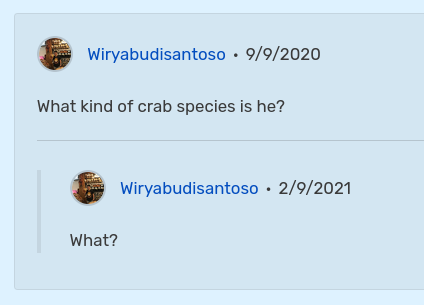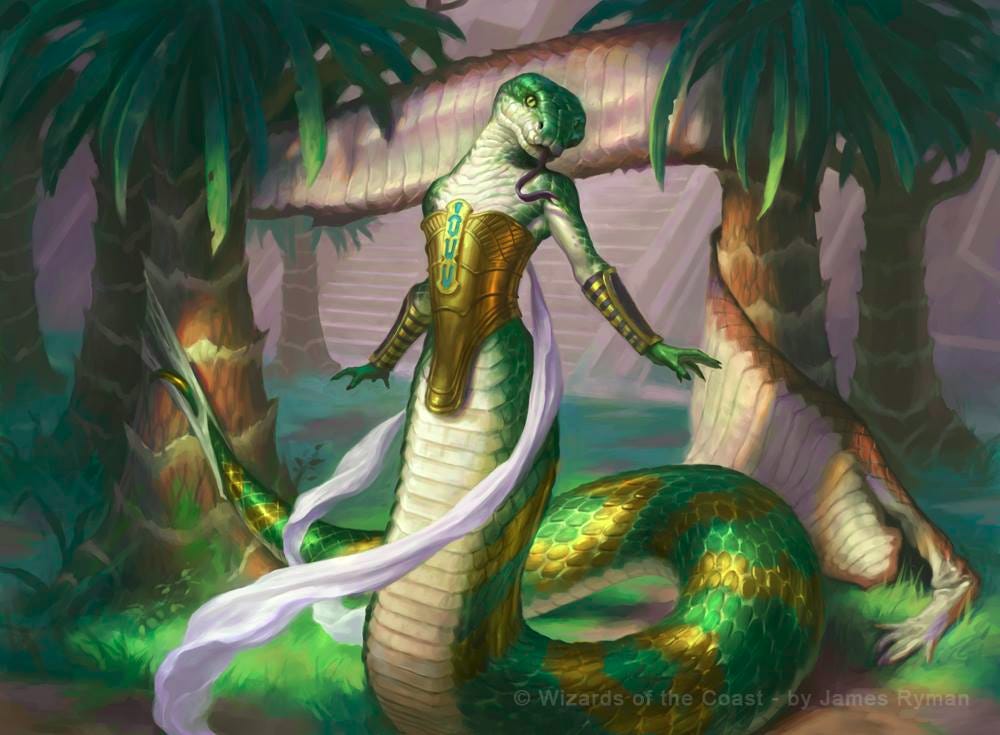Cracking the crab
I take the crab/fiction metaphor too far but maybe that's part of the point and actually very clever
Never attribute to malice that which is adequately explained by stupidity.
— Hanlon’s razor
I am not confident, I am not self-assured, and my first instinct is always to second-guess what I say. When I am writing I often go off on tangents in my notes where I contradict myself until I find an essential truth (this never happens) or give up and pick something that sounds mostly okay with a caveat (this always happens). All of my friends are similarly polite, indecisive, and/or neurotic, and while I love them for it I know this waffling can lead to paralysis. So, to break this impulse, I often pretend to be self-assured as if I am playing a character. Everyone has a social persona, but I really treat this parody of myself as a separate creation, my own little Sebastian the Crab. I let Crab be one who really wants to order Thai, or who is obsessed with StartUp (2016), or any other thing that doesn’t really matter but having an opinion keeps the ball rolling.
I am explaining my Crab for two reasons. First, it acts as a disclaimer for any statements I make: I can frame my writing as the work of a character, which means I can adjust how much it represents my “true” beliefs at my convenience. This could be used as an insidious rhetorical technique, laying the foundation for any motte and bailey I may want. This is where Hanlon’s razor, or the common advice to “assume positive intent”, can be used as a shield against criticism. However, if used honestly, the persona can be a useful psychological tool for receiving criticism. I can admit the Crab is wrong and continue to refine the character. This framing softens my initial emotional reaction and (hopefully) allows me to be more receptive. As part of the process I must also examine how the persona reflects my “true” beliefs, which brings me to the second reason I am writing about the Crab.
I treat my Crab self as a fictional character but it has plenty of influence on reality. This persona is, by construction, the most extroverted part of me. For most people, as a matter of simple math, the persona is the entirety of me. The fictionality of the Crab is just a concept that I find helpful. I would prefer if anyone who has a casual interaction with me would buy into the idea that I can change, that I can be rewritten, that I will have a character arc. But anyone can take a snapshot of that character and decide it is a fixed reality. They break off a piece of my fiction. They crack the crab.

Roleplaying a conspiracy
This boundary between fiction and reality has been on my mind because I have been participating in more tabletop role-playing games. I only started playing RPGs as an adult. I never had much interest in fantasy or theater in my teens, which is the age (formerly) associated D&D players. I think I was too busy obsessing over my Crab, trying to make it appear as genuine as possible, and taking everything very personally. Nowadays I enjoy playing characters the same way I enjoy writing fiction, except there is no pressure to put words to paper.
There is a cartoon version of the D&D nerd who can’t tell fantasy from reality, but I’m not concerned with that. I have never met that person. In the new world of TTRPG online media it seems like that stereotype is fading. In my experience people who play games understand the rules of reality more than most: [insert absurdly detailed explanation of the physics of a magic spell here]. If anything, most people find it hard to act as anything other than their usual self with a fantasy makeover.
The game I have been playing recently has me more concerned about these boundaries. It’s named Delta Green after the secretive organization that frames the game’s plot. The player characters work for this organization, though their official credentials are somewhere between Top Secret and non-existent. Each game centers on an “operation” which generally starts as a mundane assignment—follow this trail, investigate that crime—and inevitably turns into a confrontation with a supernatural terror. Within the fiction of the game, creatures of myth and urban legend can exist. Unfortunately, they are always horrible. Characters who survive may still have their lives ruined.
As a horror game, there are boundaries that need to be set upfront to ensure people can have fun (yes, it really is fun). Content warnings make everyone more comfortable and it’s important that anyone can veto an experience. But those aren’t the boundaries I’m talking about either.
Delta Green is set in the real world in modern times. The characters are regular people with the skills of ordinary adult professionals. If they never got involved with the organization, their lives would only be as dramatic as a true crime podcast. Such a life would still have plenty of room for harrowing experiences, but it wouldn’t require The Conspiracy.
This particular game is built around the idea that there is a capital-C Conspiracy manipulating the world. The Delta Green organization is a benevolent Conspiracy or, at least, the agents believe it’s better than the alternative: exposing the public to mind-shattering nightmares made flesh. The players are encouraged to think conspiratorially. Who can we control? Who knows too much? How do we cover our tracks? These decisions are always hard, but they are always weighed against the existence of something worse.
Just like I’ve never played D&D with someone who thought they could fly, I doubt I’ll ever play DG with someone who thinks Cthulhu is taking a nap in the Pacific Ocean. However, for most of my adult life I have been watching the rise of conspiracy groups in online culture and offline politics. I have already encountered a fictional conspiracy that has a real-world counterpart with sincere believers.
I wouldn’t write about “reptilians”
I recently ran a scenario published by the creators of Delta Green in which the supernatural threat was a “serpentfolk”: a creature roughly the size and shape of a human but with monstrous snake-like qualities. On its own, that’s great material for a horror mystery. Snakes are frightening as well as intriguing. They are constantly referenced in literature, modern and ancient, any of which can be used as in-game “research” or misdirection. With nice helping of magic on top the creature can also be mistaken for a regular human, leading to questions of who has been impersonated or influenced by the monster.
Also, people like drawing them:

But while I was preparing to run the game something kept nagging at me: the reptilian conspiracy theory. A 2013 survey survey of 1,247 American voters suggested “4% believe shape-shifting reptilian people control our world by taking on human form and gaining power.” In the media I follow, this belief is usually wrapped up in a broader conspiracy mindset. And the depressing (but unfortunately not surprising) fact is that this conspiracy theory is built on racism. Yes, this one is past the “antisemitic point of no return” like many others.
I’m not going to go into the conspiracy theory in detail here—read the links for a nice bad time. The question I’m facing is this: if I were writing a DG scenario, would I consider including shapeshifting snake people?
My first instinct and final decision are the same: no. There are simply too many good alternatives for monsters, whether pre-existing or original. But that may not be the case for every mythological creation with real-world consequences, so I am going to explore some of the defenses for their inclusion.
Some may turn to the get-out-of-jail-free card of claiming ignorance. The average person doesn’t know much about the reptilian conspiracy theory (I hope) so this might seem like a good defense. However, the type of person who spends their time reading through the lore of a TTRPG built around a fictional Conspiracy is going to find it hard to make that claim. I don’t expect anyone to assume positive intent for my Crab when it comes to racist symbols.
Then there is the “well actually…” defense. According to sources I have read, the idea of serpentfolk overlords originated as a fictional monster. (My source is Wikipedia because my copy of A Culture of Conspiracy by Michael Barkun is on hold at the library.) The author Robert E. Howard wrote various Weird Tales around 1930 which became part of the Cthulhu Mythos which, eventually, became the basis for Delta Green. The reptilian conspiracy only arrived at the turn of the millennium when David Icke sired his grotesque spawn. These two things may share an appearance, maybe an inspiration, but they are separate and distinct.
For me, this argument only works as long as I don’t actually read Robert E. Howard’s stories. Once I read “The Children of the Night” [Project Gutenberg] I had to confront the idea that the racism was always the point. I suppose that shouldn’t be too surprising, given the time period and partnership with H. P. Lovecraft, but that story would be comical were its influence not so depressing. I don’t know if any reptilian truthers out there care about that story in particular, nor do I think that work depends on the idea of a reptile at all. A mind warped by xenophobia could believe the creatures are a metaphor for any group that it wants to commit violence against.
This is actually not an uncommon pattern. Real-world conspiracy theories are often inspired by fiction, producing something extremely serious from material that was supposed to be fun. Descriptions of UFOs tend to morph over time to match the imagery provided by books, comics, and movies. Some people try to force this UFO fiction into reality. They crack the crab.
My solution for playing through the serpent scenario (which I did not write) was to incorporate the unintended horror of Howard’s legacy. The story features a serial killer whose motive remains unknown. One piece of evidence I added to the scenario was a copy of “The Children of the Night” and a witness who describes the killer’s growing obsession with that material. This allowed us to discuss, both in-character and out-of-character, the consequences of these extreme beliefs.
But I’m still not sure that’s enough. I can easily imagine a TTRPG narrative being interpreted as factual history by someone who thinks it’s only disguising itself as fiction to slip past the censorious snakes. I might share an anecdote about a game I played and have an acquaintance think I believe in reptilians. Now that is a real nightmare for my Crab.



